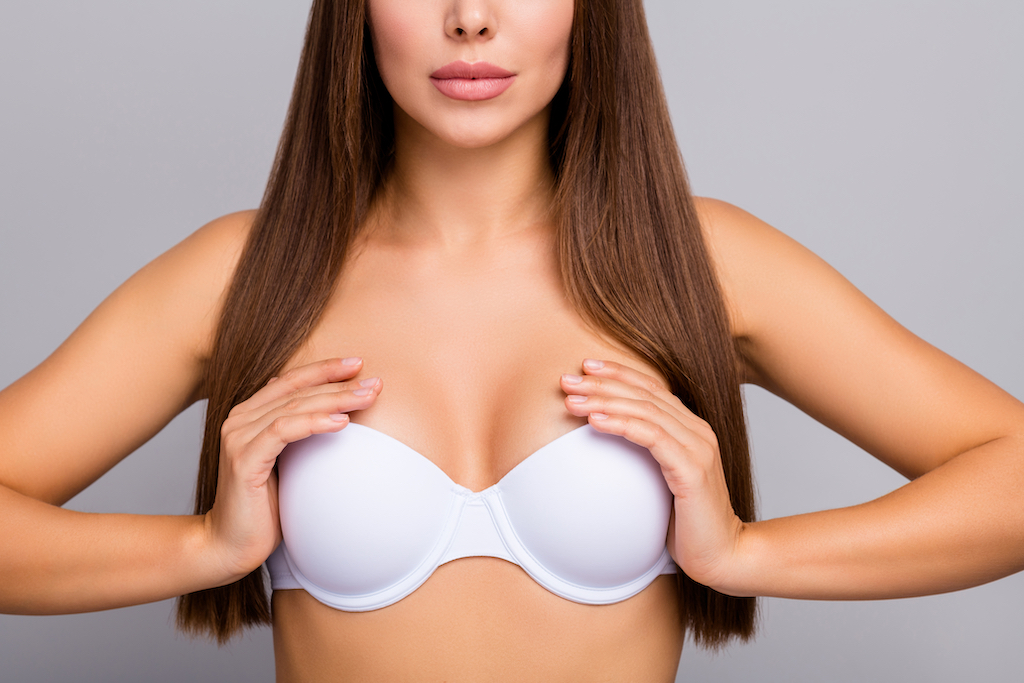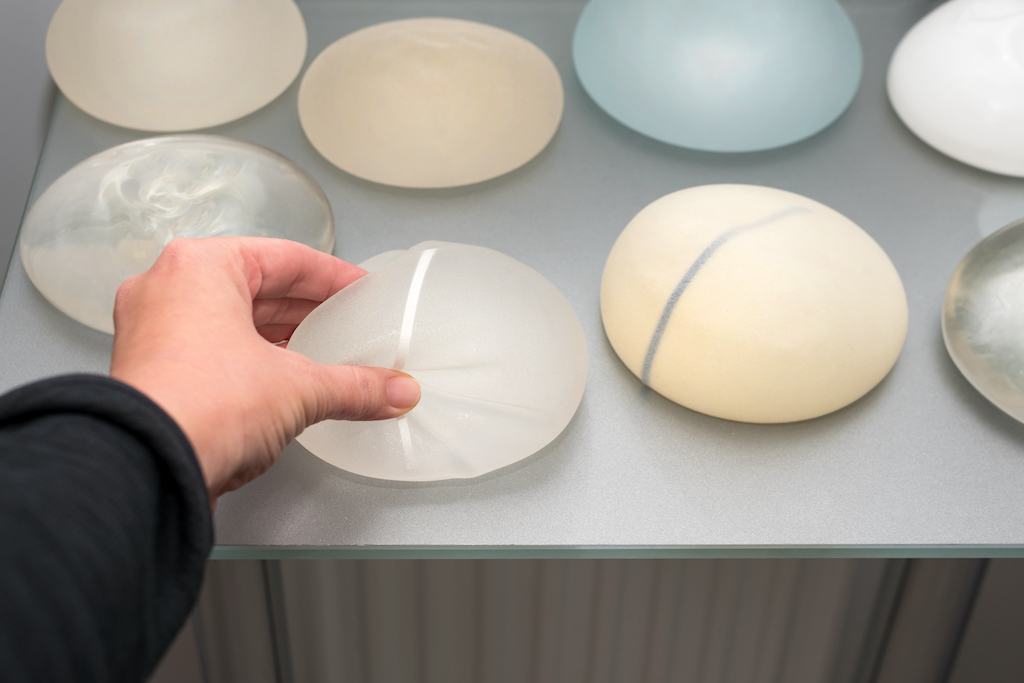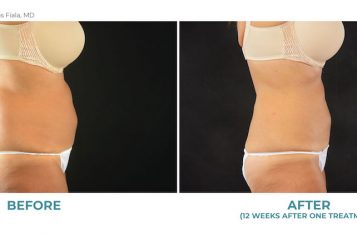Dr. Jeffrey Lee is a Harvard-trained plastic surgeon serving patients in the greater Boston area. He specializes in cosmetic procedures of the face, breast, body, as well as nonsurgical treatments such as Botox and Juvederm. After medical school, he completed his training in surgery at Massachusetts General Hospital, a Harvard Medical School hospital. During this time, he also completed a fellowship in the Plastic Surgery Research Lab where he published numerous book chapters and journal articles. He also traveled extensively giving presentations at the national and international level advancing the field of plastic surgery. Haute Beauty chats with Dr. Jeffrey Lee to learn more about the current trends in breast implant and size.
 Photo Credit: ShutterstockHaute Beauty: What is breast augmentation?
Photo Credit: ShutterstockHaute Beauty: What is breast augmentation?
Breast augmentation is a way of making your breasts larger. The most popular way of doing this is by using implants, either saline or silicone. It is one of the most popular cosmetic procedures performed by surgeons and requested by patients. It is also one of the procedures with the highest patient satisfaction, which means patients absolutely love their breasts after augmentation.
HB: What delivers the most natural results?
Implants come in different profiles which allows me to customize the surgery to each patient. If a patient wants a more gentle transition between her upper chest and her breast, we sometimes consider a moderate profile implant. Patients wanting a fuller (but not too full) look often go with a full/high profile implant. Whatever the goals, there is definitely an implant that will fit. It is up to you and your surgeon to figure out what that is.
HB: What is new about silicone breast implants?
There is no doubt that silicone implants are far and away from the more popular choice when it comes to breast augmentation. They definitely achieve a softer feel and a more natural look. While they are extremely safe, some patients have concerns with silicone implants which come from older generation breast implants. The older implants were filled with free silicone. Think of it like a goo that would spill out if the shell ruptured. The newer silicone implants are highly cohesive and are often referred to as gummy bear implants. While one specific brand of breast implants are technically the gummy bear implants, many refer to the newest generation all as gummy bear implants because of their cohesive silicone fill. This means that the silicone fill is a lot more solid than liquid while still retaining its soft and natural look/feel. This means that if the shell ruptures, the silicone retains its shape just sits there like two pieces of a gummy bear, hence the name gummy bear implants. Removing ruptured older generation breast implants was always a big deal as it got really messy with all the free silicone. Nowadays, if a silicone implant ruptures, it is easy to remove in a few pieces and I am able to get 100% of the implant material out.
 Photo Credit: ShutterstockHB: Do people still use teardrop or shaped breast implants?
Photo Credit: ShutterstockHB: Do people still use teardrop or shaped breast implants?
Many surgeons have moved away from teardrop or shaped implants for a number of reasons. The main reason is that the benefit of looking more natural did not actually happen. Even plastic surgeons could not tell the difference when a patient had shaped or round breast implants. So while the advantages are almost nonexistent, the disadvantages are significant. First, they can move, twist, flip, or rotate. All of these can lead to a breast shape that is unnatural and often it happens only on one side which can make things look even more unnatural/asymmetric. The other reason is that most of the shaped implants are textured. Most surgeons are moving away from textured implants as they have been associated with ALCL, a rare type of cancer that can occur in patients with or that have had textured implants.
HB: Is going under the muscle still the best option?
Going under the muscle is the most popular choice for patients getting breast implants. The reason for it has changed a little bit. In the past, capsular contracture was a much bigger problem, and going under the muscle decreased the risk of that happening. Nowadays, the risk of capsular contracture is much lower and although there are no studies looking at this recently, my experience is that they are similar. That being said, going under the muscle does provide a smoother transition between their chest and breast which is what many patients look for. If you are not a good candidate to go under the muscle, a newer technique called subfascial is definitely better than what was done in the past called subglandular. Subfascial implant placement allows a layer of tissue called the muscle fascia to cover the implant and that does a great job of transitioning the implant for a much more natural look.
HB: What is the current trend in breast implant shape and size?
In the 90s and early 2000s, patients often wanted large and slightly wide breasts. Nowadays, patients want a smaller and perky/sporty appearing breast. For that reason, patients are choosing to go with a slightly smaller breast implant size and a slightly higher profile than what was popular in the past.
For more information, visit Dr. Brian A. Levine's social media:

























